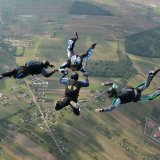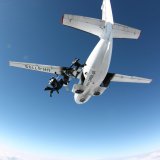
skydiverek
Members-
Content
3,426 -
Joined
-
Last visited
-
Feedback
0%
Content Type
Profiles
Forums
Calendar
Dropzones
Gear
Articles
Fatalities
Stolen
Indoor
Help
Downloads
Gallery
Blogs
Store
Videos
Classifieds
Everything posted by skydiverek
-
True, plus non-siliconized reserve loop: Video: https://www.youtube.com/watch?v=HYIUjKGxagI Explanation of the above video: http://www.dropzone.com/cgi-bin/forum/gforum.cgi?post=2101957#2101957
-
Yes, Sunpath Javelin had the problem with red cordura. And Atom had a problem with too-large-of-diamater reserve PC caps, where they replaced them with smaller ones. They also had the "sticky problem". http://www.dropzone.com/cgi-bin/forum/gforum.cgi?post=3844811#3844811 and http://www.dropzone.com/cgi-bin/forum/gforum.cgi?post=3351682;search_string=quick;#3351682
-
Possible device for Lost Cutaway canopy
skydiverek replied to shropshire's topic in Gear and Rigging
Back in 2007 it was $525 for the finder and $100 for the chip. Why didn't it cought up amongst the tandem DZs??? -
What is dangerous about them? The reserve is almost always flying straight, with minimal downward velocity of, let's say, 15 ft/sec. Plenty of time to untwist. Much better than burning altitude freefalling at 176 ft/sec, trying to get stable, thus opening much lower, or not at all... Kind of a judgement call IMO. I can get stable pretty quick & when I'm down to 'it either works or game over', I like being in a stable launch position. Nothing wrong with using available altitude to insure that...again 'in MY opinion'. I'm very comfortable with my hard deck, I have time to do it right. "What's dangerous about them?" ~ mainly you have no control of where you are going, in crowded skies that can mean a wrap...sure would suck to be stuck in a severe wrap @ 2000' & be all out of parachutes. Weigh that against a cleanly opened reserve under control @ 1500'...which is still twice as high as your AAD is set. In the last 15 years I heard about approx 40 jumpers (in the US alone), who either cutaway and did not pull reserve, or pulled it too low (some had 6000 jumps and multiple cutaways before). In the last 15 years I heard about ZERO wraps under reserve. Both thing can happen, but the odds for former are WAY higher than the latter.
-
Search for: Vigil "Hello problem"
-
Click on each photo to see more. This album is not mine. I believe you have to be logged on to FB to see it. You can always open a fake/bogus Facebook acount. Worth it!!!
-
Click on each photo to see more. This album is not mine. The ready-to-jump people were caught this way during a pre-boarding check. I believe you have to be logged on to FB to see it. You can always open a fake/bogus Facebook acount. Worth it!!! Enjoy : https://www.facebook.com/boc.skydive/media_set?set=a.118568528229144.29575.100002279927176&type=1
-
Can't you just color the line attachments yourself, with the fabric-safe marker?
-
The PD-Reserve order form allows for custom colors: http://www.performancedesigns.com/orderforms/PR%20Reserve_Order_Form.pdf
-
No IE for ME !
-
Is still displays upside down on my comp. Windows 7, with Firefox 30. Same on latest Chrome 35. But displays OK on Internet Explorer 9 !
-
I post an ad. I have a photo taken right side up. I upload it to the ad. The minature photo displays right side up. But when you click on the photo to see its larger version, it displays upside down... Example here: http://www.dropzone.com/classifieds/Detailed/Reserve_Canopies/PD_Reserve_143_zero_jumps_great_shape_free_world-wide_airmail__163074.html
-
One high, one low. Both accesible with either hand.
-
From first post: "My rig is a Mirage G4 M7 with a Spectre 210 and a PDR 218".
-
This usually only happens with the AAD cutter fire (located between the reserve PC and freebag, or below the freebag).
-
Please read from THIS post, down: http://www.dropzone.com/cgi-bin/forum/gforum.cgi?post=3329635#3329635
-
What is dangerous about them? The reserve is almost always flying straight, with minimal downward velocity of, let's say, 15 ft/sec. Plenty of time to untwist. Much better than burning altitute freefalling at 176 ft/sec, trying to get stable, thus opening much lower, or not at all...
-
What if Baumgartner pulled high?
skydiverek replied to motorheaddown's topic in General Skydiving Discussions
Read from THIS post, down: http://www.dropzone.com/cgi-bin/forum/gforum.cgi?post=4640744#4640744 -
Watch starting at 11:25 here: https://www.youtube.com/watch?v=z-WBBLAgE_s
-
Too bad it will not work...: From Bill Booth, talking about the pockets as well: "Let me clear up one myth right now. The free bag system WILL NOT pull your reserve bag out of its container in the event of a horse shoe malfunction. A horse shoed 16 foot long, 2 inch wide, free bag bridle generates only about 2 pounds of force on the bag at terminal velocity. Most reserve canopies weigh over 5 pounds, not counting force required to extract them from the reserve container, especially if the main container is still closed. What the long wide bridle will do, however, is stabilize the bag, (if you reach back and throw it out of the container) so that it won't tumble through its own lines as it deploys. So, if you ever experience a horseshoe malfunction of your reserve, don't just lie there and wait to hit the ground, sit up until you feel the reserve bridle hit you in the back of the head, reach back and pull on it until the free bag is out of the container, and then let go. The drag of the bag itself, helped out by the bridle, will then carry it to line stretch. I put out a film about this about 15 years ago, but a lot of people seem to have forgotten." and "The pull generated by a 2" reserve pilot chute bridle in a horseshoe configuration is about 2 pounds. I published a video recording that fact about 20 years ago. Reserves weigh at least 5 pounds. Plus, all modern reserve containers add a "containment" force to keep the reserve bag in the container during pilot chute hesitations, to prevent out-of-sequence deployments (which, by the way, have killed several jumpers using older containers without this safety feature). So, it usually takes at least 10 pounds of force to remove a reserve bag from its container. Therefore, a horse-shoed reserve bridle does not generate nearly enough force to pull your reserve bag out of its container. This is a good thing, because it prevents out of sequence deployments due to pilot chute hesitations. The basic problem with two reserve pilot chute systems like my Vortex (which I developed years before the Catapult, but did not market) or the Catapult itself, is that they cannot tell the difference between a pilot chute hesitation (very common) and a reserve horse shoe malfunction (very rare). So, the second pilot chute on these systems can easily pull the reserve free bag above a hesitating primary (spring loaded) pilot chute, allowing that pilot chute to get into the lines below the free bag, thus totaling your reserve. So, the Catapult system actually encourages out of sequence reserve deployments, which as I said above, is a very bad thing. I tried to solve this problem with the Vortex, but was unable to do so. The Catapult does not solve it either." and "The freebag system only "Works" if the bag is first "ejected" from the container by some force OTHER than the horse shoed bridle. On the Paraflite dummy drops, this force was supplied by the tumbling dummy. Once the bag is out of the container (at terminal) it will blown upward by its own drag. A horse shoed 2" bridle only supplies about 1 pound of drag. Most reserves weigh at least 5 pounds, and it takes at least 10-15 pounds to pull the bag out of most modern containers. This is a good thing because of the likelihood of reserve pilot chute hesitation. If your bag falls out of the container while your pilot chute is hesitating, and gets above that pilot chute, you could be in a lot of trouble." and "In my tests, a horse shoed freebag bridle pulls only about one pound at the freebag end. Pockets on the bridle don't pull much more, and certainly not enough to pull a freebag out of a modern container. This is good, because the last thing you want during a pilot chute hesitation (common on internal spring-loaded pilot chute systems) is for your bridle to pull your bag out of the container and above the hesitating pilot chute. Reserve totals are rarely fun." and "With your main container (and riser covers) closed, it can easily take over 15 lbs. of pull to remove your reserve bag from the container. It takes a pilot chute of about 13" finished diameter to do that. Pockets on the bridle won't generate nearly that much drag. But the most important thing to consider, is that the second pilot chute can't "tell" the difference between a reserve horse shoe (which is very rare) and a reserve pilot chute hesitation (which is very common). Ask yourself this simple question: "Do you really want your reserve bag pulled out of the container by the secondary pilot chute while your main pilot chute is hesitating right above?" Sounds like a recipe for an entanglement between the heavy, spring loaded primary pilot chute, and your reserve lines to me." and "Question: So why do we have 2" bridles in the first place? Answer: Para-flite started it over 20 years ago. When they came out with the first square reserve, the Safety Flyer, they decided to "tinker" with a lot of other things too. The "free-bag" with its bungee "safety stows" and 2" wide "anti-horseshoe" bridle was the result. The Safety-Flyer was marketed with the Swift container system which had no pocketed corners. As a result, when you pulled the ripcord, the bag would simple fall out of the container. When they drop tested this combined system with a built-in "horseshoe" malfunction and a tumbling (unstable) dummy, the bag would simply be ejected from the container because of centifugal force (angular acceleration) and be pulled to line stretch by the force of the relative wind on the bag. The super long bridle allowed the lines to unstow, and the freebag allowed the canopy to open. The 2" width merely provided stabilization so that the bag did not tumble through the lines as they unstowed. The anti-horseshoe system worked in those test conditions. However, as stated earlier in this thread, it will not work with a stable jumper using a modern piggyback system. The long, wide bridle has persisted out of inertia. i.e. No one wanted to go against an existing, "proven" system. Even though, I suspect, the wide bridle helps create and lengthen pilot chute hesitations, because of the drag it creates in the burble right above a stable jumpers back on initial pilot chute launch. I have made one change recently, however. I had to shorted the bridle a bit to make the Skyhook work correctly. I kept the 2" width because of the stabilizing effect I noted above."
-
George Bush Sr. tandem jump
skydiverek replied to skydiverek's topic in General Skydiving Discussions
True. See the attached, and look at the flag and smoke. -
George Bush Sr. tandem jump
skydiverek replied to skydiverek's topic in General Skydiving Discussions
Snagable camera, with a possibility of unstable cutaway, due to the student known to be not capable of arching... Why? (the camera). Attached. -
George Bush Sr. tandem jump
skydiverek replied to skydiverek's topic in General Skydiving Discussions
Longer version: https://www.youtube.com/watch?v=ziv2kH7Hx94


